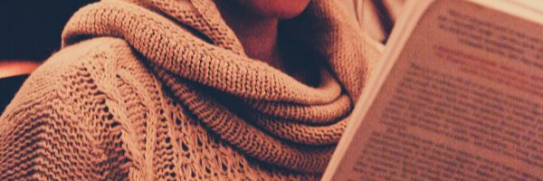For the past couple of weeks I’ve been focusing on query letters, and they’ve been the subject of my previous two blog posts. So now we’ve discussed things to include in a query letter, and things to leave out, I thought I’d share my step by step approach.
Please note, as with my synopsis writing method, this method might not work for everyone, so please only use it as a guide. I’m hoping that for authors who are new to querying, it might provide a bit of a starting point.
Research your agent
Once you’ve chosen an agent, research them even more. There’s a number of ways to find out more about an agent. Their website, their social media accounts, interviews, YouTube videos…find out as much as you can. Who do they already represent? What books have they enjoyed recently? What makes a query letter stand out to them? This could be the most important email of your life, so you need to know your stuff. Even the little things, like their preferred contact method for queries. (Some like emails, others have online forms.) It’s the best way to show you’re not just sending out the same generic letter to 100s of agents at once.

Icebreaker/Introduction
After addressing the query to them, you need your icebreaker or introduction. An icebreaker could be if you met them at an event, or heard them give a talk, or were recommended to them by somebody you know. And if you don’t have an icebreaker like this, then a simple introduction is just as powerful. Explain why you chose them, and why you think your story is a match for their interests.

Hook/Blurb
The most important part of your letter, is this moment. Your hook/blurb, your chance to sell your book and make the agent excited to read your submission. This is another example of why doing your research is important. Some agents like to see the hook in two powerful sentences, others would like a blurb or even a whole paragraph summing up your work. Remember, this isn’t a copy and paste of your entire synopsis. Just a quick introduction to the heart, conflict or theme of your work.

Why you wrote it
It can be a great personal touch to explain why you wrote your novel, especially if you have a connection to any of the themes, characters or settings. Did you write it to raise awareness or something, to represent something that isn’t represented enough in books? Were you inspired by your job, or a life changing event? Let the agent know. It can add real heart to your work.

A bit about you
Keep it brief, but share a little info about yourself. Relevant info. Share any courses you might have been on, writing events you’ve attended, qualifications you have or competitions you’ve won. Note that your qualifications and experience don’t need to be in writing – perhaps your degree in psychology helped you to delve into your characters’ mindsets, or your previous work as a carer enabled you to write a genuine account of what it’s like for those living in care. This links in with the point above, and can give the agent a brief, but powerful, insight into who you are.

Sign off/Signature
Time to say goodbye! A standard signing off is fine here. Don’t be tempted to ramble on about how grateful you are for their time, and how you know they’re really busy, and how you desperately would love a reply even if it’s a no. Keep it simple, polite and professional. And don’t forget to include contact details or other relevant information (website links etc).

Attach files!
Don’t tell them you’ve attached your first three chapters and a synopsis and then…don’t! Although you could send them again afterwards, it’ll be much easier for the agent if they have everything all in once place. Once you’ve read through your letter, attach those files, and then you’re all set to press the send button. Exciting!

Good luck to anyone who is at the beginning of their querying journey. It’s long and scary and exciting, but most of all a huge positive step in your writing life. If you have any query tips of your own, or any questions, just pop them below.
Until then,
Keep writing,
M
x
Find me on Twitter and Instagram.


Great info here – I’ve never thought about explaining why I wrote my novel! I can see how that could help an agent get emotionally invested. Thanks Lovely. ❤
LikeLiked by 1 person
Thank you Liv 😀 ❤ xx
LikeLike
Query letters are so important, because you only get one chance. I am about to start querying again and I am very conscious of tayloring each query letter to the recipient. Thanks for a great post!
LikeLiked by 1 person
You’re so right Naomi! Thanks for commenting, and best of luck with your queries xx
LikeLiked by 1 person
Thanks, M.L. : )
LikeLike
Loved these query posts, and this final one caps them off nicely. Excellent tips, Meelie! Wishing you all the best with your latest round of queries.
LikeLiked by 1 person
Thanks so much! 😀 x
LikeLiked by 1 person
Many points for me, my Dear Davis! Kudos and Thanks. 🙂
Shall be sharing on my blog through copy and paste of site id, as reblog button not found.
https://lovehappinessandpeace.wordpress.com/2019/10/06/query-letters/
LikeLiked by 1 person
Thanks so much 😀 xxx
LikeLiked by 1 person
🙂
LikeLike
You sharing your experience with us is genuinely appreciated.
Could you please clarify your last point? You say NOT to say “I’m attaching this and that” but to attach it. Are you saying we should copy+paste those things in the query letter at the bottom? Or add as attachments separately but not specify that in the letter. If that is the case, why not?
LikeLiked by 1 person
Hey
What I meant was, if you’ve written in the cover letter “I’ve attached my chapters and synopsis here”, you don’t want to forget the attachment! As it could look as though you’ve just copied the email from another query, or makes you look forgetful.
As for attaching them versus pasting them at the end of the email, that depends on the agent. The vast majority I’ve read up on like them attached, although one agent did request it was put in the main body of the email. I’d say, unless they say otherwise, clearly titled attachments is best 🙂
Hope that helps! ❤ xx
LikeLiked by 1 person
Gotcha! Thank you for clarifying.
LikeLike
Thank you for the great tipps! Best wishes, Michael
LikeLiked by 1 person
Thank you for reading! x
LikeLiked by 1 person
Always a pleasure to me, Sally! Have a nice day! Michael
LikeLiked by 1 person
Sorry, i wrote “Sally”. 😉
LikeLike
Haha no probs, maybe that can be my pen name now :p
LikeLiked by 1 person
This was such a hard thing for me to do. In fact when it came time to write it I had my editor do it. She wasn’t attached to the book the way I was. For me, that’s what made it so difficult. These are excellent examples. Really appreciate what you did here.
LikeLiked by 1 person
Thank you Bryan ❤ x
LikeLiked by 1 person
FANTASTIC TIPS ON A GREAT SITE, I LOVE THE THEME OF THE SITE, CHINA
LikeLiked by 1 person
Thank you 🙂
LikeLike